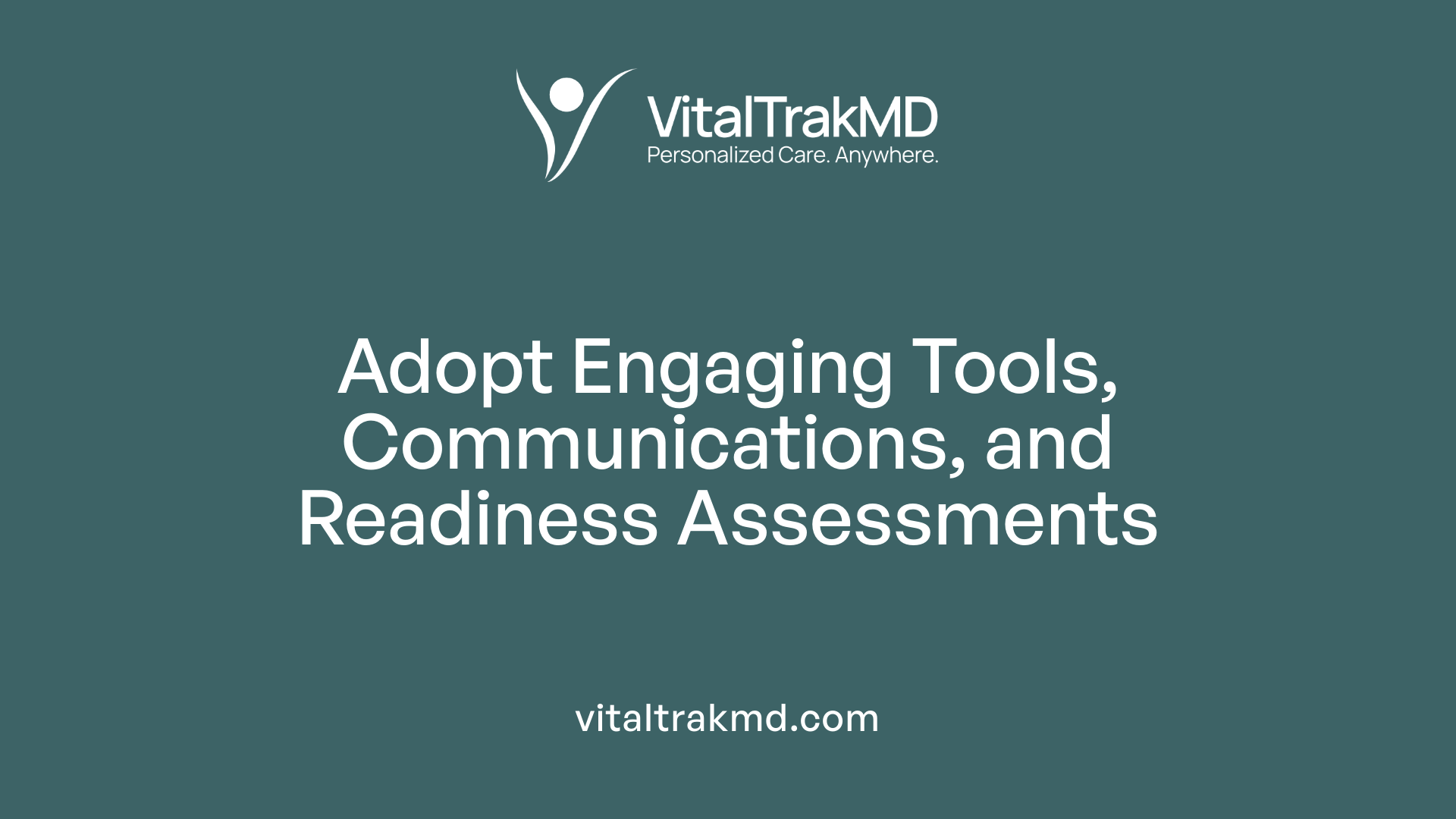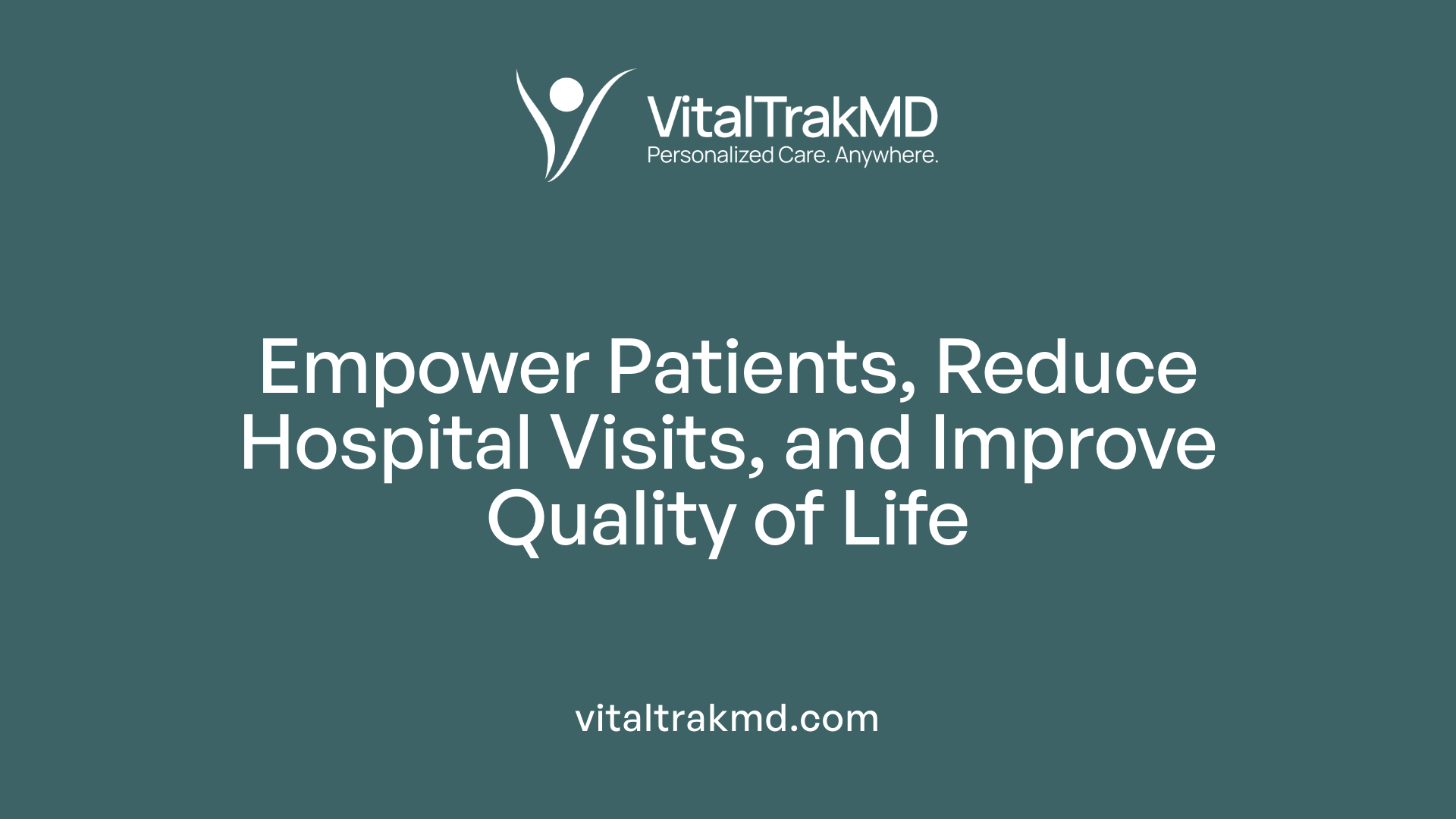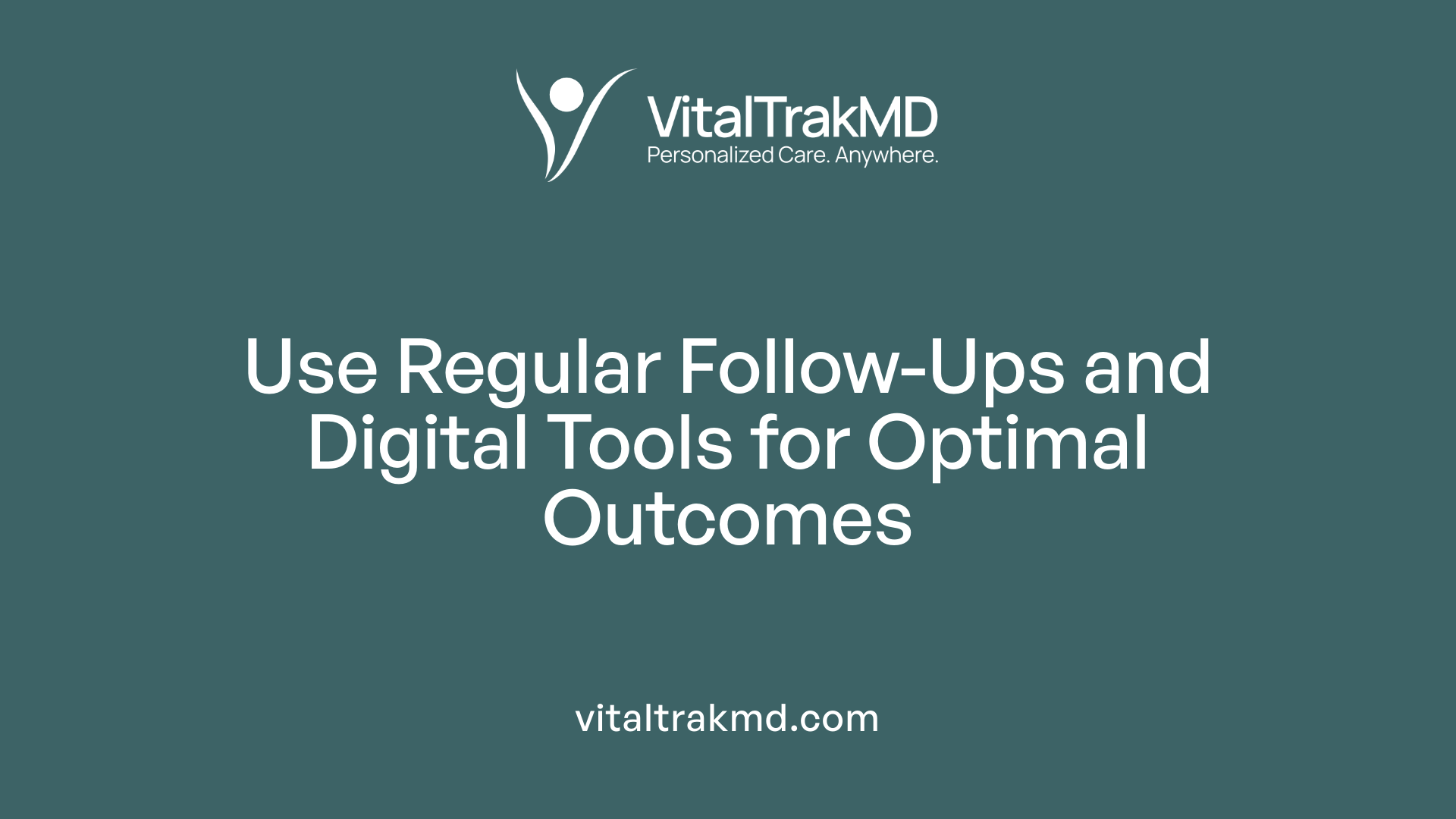Avoiding Common Mistakes in Self-Managed Chronic Illness

Understanding the Foundations of Successful Self-Management
Effective management of chronic illness is essential for improving quality of life, reducing hospitalizations, and lowering healthcare costs. However, many patients encounter barriers and common mistakes that can hinder their self-care. Recognizing these pitfalls and adopting evidence-based strategies can significantly enhance health outcomes for those living with multiple chronic conditions.
Core Principles of Chronic Disease Management

What are the key principles of successful chronic disease management?
Managing multiple chronic conditions requires a comprehensive, patient-centered approach that focuses on continuity and coordination of care. Central to this are the 4Cs: care coordination, first contact of care, continuity of care, and comprehensive services.
Care coordination ensures seamless communication among various healthcare providers and integrates services across different sectors. Employing designating case managers and interoperable health information systems helps in tracking patient progress and preventing gaps in care.
Having a dedicated first point of contact, usually through accessible primary healthcare, encourages early intervention and ongoing management. Regular follow-ups and consistent relationships with healthcare providers foster trust and ensure that patients are engaged in their care.
Continuity of care means patients consistently see the same providers, enabling better understanding of their history, preferences, and needs. This stability improves medication adherence and helps in timely detection of health deterioration.
Providing comprehensive services includes routine screening, immunizations, health education, and mental health support, all delivered through multidisciplinary teams. This holistic care approach addresses both physical symptoms and emotional well-being.
Enhancing accessibility is also essential. Strategies like telehealth services, mobile clinics, and policies that position primary care as the initial contact point make it easier for patients to receive regular care.
Overcoming barriers such as resource limitations and healthcare provider shortages is crucial for sustainability. Strengthening primary care, improving workforce retention, and reducing health disparities contribute to more effective management.
These principles are supported by frameworks like the Chronic Care Model (CCM), emphasizing the importance of productive patient-provider interactions and proactive engagement.
Successful management also involves understanding and addressing social determinants of health, including financial barriers and social support, which influence adherence and health outcomes.
Ultimately, integrating these core principles fosters a system that promotes active patient participation, tailored care, and continuous support, leading to improved quality of life and decreased healthcare utilization.
Strategies and Tools for Effective Self-Management

What are effective strategies for managing chronic illness?
Managing chronic illness effectively involves proactive efforts by the individual to stay engaged in their health care and daily routines. Patients need to understand their conditions thoroughly, which can be facilitated by education programs and reliable sources such as government or nonprofit websites. Empowerment through knowledge encourages better decision-making and fosters confidence.
Self-monitoring is a vital component. Regularly checking blood glucose, blood pressure, or other relevant health indicators helps patients track their progress and detect early signs of worsening conditions. Setting achievable goals using the SLAM acronym—Specific, Limited, Achievable, Measurable—can help keep efforts focused and attainable.
Behavioral interventions complement medical management by encouraging lifestyle changes like increased physical activity, healthy eating, smoking cessation, and stress management. These strategies often involve gradual adjustments, making them easier to sustain.
Healthcare providers support these efforts through person-centred approaches that respect patient preferences, beliefs, and social circumstances. Developing shared care plans and maintaining open communication foster trust and adherence.
Community programs, such as the Chronic Disease Self-Management Program (CDSMP), have demonstrated positive outcomes. These workshops teach skills like problem-solving, action planning, and coping strategies. Led by trained facilitators, they offer interactive sessions that cover topics including medication use, pain management, nutrition, exercise, emotional well-being, and communication.
Integrating tools such as the Self-Management Screening (SeMaS) helps identify individual barriers, whether psychological, social, or environmental, allowing for tailored interventions.
Support from family, social networks, and community resources enhances self-efficacy. Technology-based solutions, like online programs and mobile health apps, also aid in tracking health metrics and providing tailored educational content.
Overall, combining education, monitoring, behavioral support, and strong patient-provider relationships creates a comprehensive pathway to better managing chronic diseases and improving quality of life.
The Impact and Benefits of Self-Management Programs

What is the impact of self-management programs on patients with chronic conditions?
Self-management programs significantly improve how patients handle their chronic diseases. They promote better health behaviors, such as increased physical activity and medication adherence, which are essential for controlling conditions like diabetes, arthritis, and hypertension.
These programs boost patients' confidence in managing their health, leading to improved self-efficacy and better communication with healthcare providers. Enhanced dialogue and shared decision-making foster a more patient-centered approach, making care more tailored and effective.
Evidence from research shows that participating in structured self-management education reduces healthcare utilization. Patients tend to visit emergency rooms less often and require fewer hospital stays, helping to lower overall healthcare costs. Community-based and culturally adapted programs increase participation and support sustainable health improvements.
By empowering individuals to take active roles in their care, self-management programs promote long-term benefits. They help prevent complications, improve quality of life, and foster healthier habits that can last a lifetime. Overall, these programs are essential tools in the ongoing management of chronic illnesses, combining health improvements with social and emotional support.
Behavioral Self-Management Interventions and Their Support Techniques

What interventions support behavioral self-management in chronic disease care?
Supporting patients in managing their chronic conditions effectively involves various interventions that focus on changing behaviors, building skills, and providing ongoing support. One of the most prominent approaches includes community education programs like the Chronic Disease Self-Management Education (CDSME). These programs teach patients essential skills such as goal setting, problem solving, medication management, and self-monitoring. They are delivered through multiple channels, including face-to-face workshops, online courses, and telehealth services, making them accessible to diverse populations.
Digital health tools and telemonitoring are also crucial in facilitating effective self-management. These technologies enable patients to regularly track health parameters such as blood glucose levels, blood pressure, or symptoms. Mobile apps, wearable devices, and remote monitoring systems empower patients to stay engaged with their health status and communicate easily with healthcare providers.
Behavior change techniques form the foundation of many successful interventions. Techniques like action planning, motivational interviewing, and self-efficacy enhancement help patients adopt healthier habits and adhere to treatment plans. For example, guided exercise routines tailored to individual capabilities can improve physical health and mental wellbeing.
Despite their proven benefits, many interventions tend to underutilize technological solutions and psychological strategies. Incorporating tailored, technology-supported approaches can address specific barriers faced by individuals, such as low health literacy or ambivalence toward change. Essentially, combining community programs, digital tools, and behavioral techniques creates a comprehensive framework that supports sustainable self-management and improves health outcomes.
| Intervention Type | Methodology | Focus Area | Typical Outcomes |
|---|---|---|---|
| Community Programs | Group workshops, peer support | Skills development, confidence building | Reduced hospital visits, improved self-efficacy |
| Digital Health Tools | Apps, remote sensors | Self-monitoring, real-time feedback | Better disease control, increased adherence |
| Behavior Change Techniques | Goal setting, problem solving | Lifestyle adjustments, medication adherence | Enhanced quality of life, symptom management |
Overall, fostering a patient-centered environment that combines community engagement, innovative technology, and psychological support is vital to empower individuals with chronic conditions.
Setting Goals and Structuring Self-Management Approaches

How do goals differ from self-management approaches in chronic illness?
In managing chronic illnesses, setting goals typically involves identifying specific health targets, such as lowering blood sugar levels or increasing mobility. These goals serve as clear markers the patient and healthcare team aim to achieve together.
However, self-management approaches are much broader. They include developing skills and understanding necessary for patients to take an active role in their care. This encompasses learning how to monitor symptoms, adhere to medication schedules, manage emotional challenges, and make lifestyle adjustments.
Self-management strategies often involve ongoing behavior changes and problem-solving, supported by educational programs and behavioral models. These approaches emphasize empowering patients to handle their conditions independently, fostering confidence and self-efficacy.
While goals provide specific objectives, self-management approaches create a framework for patients to meet those goals through continuous learning and adaptation. They also involve collaboration with healthcare providers, tailoring care plans to individual needs.
In summary, goals are specific health outcomes set within the broader scope of self-management. The approaches focus on equipping patients with the necessary skills, knowledge, and support to maintain or improve their health and well-being on a daily basis.
The Role of Evidence-Based Interventions and Theoretical Frameworks

What does evidence-based chronic disease management entail?
Evidence-based chronic disease management involves applying treatment strategies, self-management techniques, and care protocols that have been validated through rigorous scientific research. This approach ensures that the interventions used are proven to improve health outcomes, reduce symptoms, and prevent complications.
Such management is comprehensive and systematic, often involving multidisciplinary teams that work together to provide coordinated care. Key components include patient education about their conditions, development of self-management skills, and consistent monitoring of symptoms. Programs like Disease Management and the Chronic Disease Self-Management Education (CDSME) are prime examples. They aim to empower patients by teaching them how to take medications correctly, recognize warning signs, adopt healthier lifestyles, and make informed decisions regarding their care.
Evaluation of these programs involves analyzing clinical data, patient-reported outcomes, and cost-effectiveness to ensure their relevance and improve quality. Tailoring interventions to meet the specific needs of diverse populations and addressing social factors influencing health are also crucial components.
By leveraging evidence-based strategies, healthcare providers can promote better adherence, reduce hospitalizations, and achieve sustainable improvements in managing chronic illnesses. This proactive, validated approach underscores the importance of integrating research-backed practices into routine care to enhance patient well-being and optimize healthcare resources.
| Strategy Components | Description | Supporting Evidence |
|---|---|---|
| Patient Education | Teaching patients about their illness, medication, self-monitoring | Clinical trials, patient-reported satisfaction |
| Symptom Monitoring | Regular tracking to catch changes early | Health outcome studies |
| Lifestyle Modifications | Diet, exercise, smoking cessation | Meta-analyses, longitudinal research |
| Multidisciplinary Team Efforts | Coordinated care across healthcare providers | Healthcare quality improvement data |
How do theoretical models guide self-management?
Theoretical frameworks like Corbin and Strauss’s model and the Self-Management Theory provide foundational structures for understanding how individuals manage chronic diseases.
Corbin and Strauss’s tasks of living with a chronic illness delineate the ongoing activities patients undertake, such as managing symptoms, handling emotional responses, and adjusting daily routines. This model emphasizes the dynamic and evolving nature of self-management, highlighting the importance of support systems.
The Self-Management Theory, on the other hand, focuses on developing practical skills and confidence in patients, promoting active participation in their care routines. It advocates for personalized support, taking into account individual capabilities, beliefs, and social environment.
By employing these frameworks, healthcare providers can design interventions that are tailored, holistic, and patient-centered. They facilitate understanding of barriers and motivators, enabling more effective education, behavioral support, and resource allocation.
Together, these models inform the development of programs and policies aimed at improving adherence, fostering resilience, and ultimately enhancing the quality of life for those living with multiple chronic conditions.
Addressing Barriers to Self-Management

What are some of the barriers to effective self-management and how can they be overcome?
Patients managing multiple chronic conditions often face numerous hurdles that hinder their ability to effectively care for themselves. Physical limitations, such as weakened strength or sensory impairments, can make daily tasks and monitoring symptoms challenging.
Psychological challenges also play a significant role. Conditions like depression and anxiety can reduce motivation and engagement with self-care routines. Cognitive barriers, such as low health literacy or impairments, make it difficult for patients to understand their health conditions or follow complex treatment plans.
Social and environmental factors further complicate self-management. Financial hardship can limit access to medications and health services, while living in environments with limited resources or poor accessibility can hinder routine maintenance and emergency responses.
Access to care remains a major obstacle. Difficulties reaching healthcare facilities, especially in areas with long wait times or limited services, can delay necessary interventions. Additionally, limited consultation durations prevent deep discussions and personalized guidance.
To overcome these challenges, a comprehensive, multi-pronged approach is essential. Enhancing health literacy through tailored education supports patients in understanding and managing their conditions effectively. Utilizing technology, such as telehealth services, can improve access for those facing transportation or mobility issues.
Building a strong therapeutic relationship with healthcare providers is vital. This relationship ensures ongoing support, better communication, and personalized care plans. Interprofessional programs that include social workers, pharmacists, and community health workers can assist in environmental modifications and social support, addressing the social determinants of health.
Tools like the Self-Management Screening (SeMaS) help identify specific individual barriers, enabling healthcare teams to develop customized interventions.
By recognizing and addressing these barriers, patients are empowered to take active roles in managing their illnesses, which can lead to better health outcomes and an improved quality of life.
Integrating Support Systems and Community Resources

What role does social support and healthcare collaboration play in self-management?
Family and social support are crucial for individuals managing multiple chronic conditions. Emotional backing from friends, family, and community organizations can help patients navigate the stresses of their diagnoses and stay committed to their treatment routines. Support networks provide encouragement, practical assistance, and motivation—factors which significantly influence adherence to medication, lifestyle changes, and symptom monitoring.
Beyond personal networks, effective healthcare collaboration forms the backbone of successful self-management. Building a strong therapeutic alliance with healthcare providers—including good communication, continuity of care, and shared decision-making—fosters trust and personalized care. Patients who feel listened to and involved in their care plans are more likely to actively participate and follow through.
Community programs and policies further enhance these efforts. Initiatives like the CAPABLE program offer interprofessional support, helping individuals overcome environmental barriers to effective self-care. These programs provide tailored assistance, whether through home modifications, education, or resource coordination, addressing real-world challenges patients face.
The Chronic Care Model exemplifies an integrated approach that emphasizes team-based care, patient education, and ongoing support. This model encourages collaboration between clinics, community resources, and patients, creating a cohesive system that reinforces healthful behaviors.
By uniting family, communities, and healthcare systems through coordinated efforts, we can significantly improve self-management. These support structures empower patients, foster sustained engagement, and ultimately lead to better health outcomes and quality of life.
The Importance of Patient Engagement and Communication Strategies

How do shared decision-making techniques improve self-management in chronic illness?
Shared decision-making (SDM) is a collaborative process that involves patients actively participating alongside healthcare providers in making healthcare choices. Techniques like the ask-tell-ask approach, where clinicians ask patients about their understanding, provide tailored information, and then check for comprehension, ensure the patient's voice is heard.
Using SDM allows patients to express their preferences, values, and concerns, which helps tailor treatment plans to suit their lifestyles. Patients who feel involved are more likely to adhere to medications, attend appointments, and engage in lifestyle changes.
For example, establishing a mutual understanding about treatment goals creates a sense of ownership, fostering motivation and commitment. Overall, SDM bridges the gap between clinical recommendations and individual patient needs, ultimately enhancing self-management success.
What are effective communication tools to support patients with chronic conditions?
Effective communication tools serve as essential aids in conveying complex health information clearly and efficiently. These include structured appointments utilizing the ask-tell-ask method, visual aids like charts or diagrams, and written care plans.
Tools such as goal-setting frameworks (like the SLAM acronym—Specific, Limited, Achievable, Measurable) help patients set realistic targets and track progress. Also, closing the communication loop by asking patients to repeat instructions ensures understanding and reduces errors.
Digital resources like patient portals, mobile apps for medication reminders, and tailored online education programs are increasingly used to reinforce messages and promote ongoing engagement. These tools empower patients to take responsibility for their health by facilitating clear, accessible, and personalized communication.
How can assessing readiness to change support improved self-management?
Assessing a patient’s readiness to change is fundamental to tailoring interventions effectively. Simple questions like “On a scale of 1 to 10, how confident are you that you can make this change?” help gauge motivation levels.
Understanding where patients stand in their willingness and confidence allows healthcare providers to select appropriate motivational strategies. For example, patients with low readiness may benefit from motivational interviewing, small-step goals, or additional education, while highly motivated individuals might be ready for more aggressive interventions.
This assessment fosters a patient-centered approach, respecting individual circumstances and barriers. Recognizing readiness to change promotes incremental progress and maintains engagement, which is crucial for sustainable self-management behaviors.
| Strategy | Description | Benefit |
|---|---|---|
| Ask-tell-ask | Asking about understanding, providing tailored info, checking | Ensures clarity and aligns care with patient needs |
| Use visual aids | Charts, diagrams, written care plans | Improves comprehension and retention |
| Goal-setting (SLAM) | Setting Specific, Limited, Achievable, Measurable goals | Increases motivation and tracks progress |
| Assess readiness to change | Simple questions to gauge confidence and motivation | Tailors interventions and enhances adherence |
| Digital tools | Apps, portals, online programs | Promotes ongoing engagement and self-monitoring |
Being strategic in communication and understanding the patient’s stage of change enables more effective self-management, ultimately leading to better health outcomes.
Monitoring the Effectiveness of Self-Management and Ensuring Quality Care

How can regular follow-ups and communication improve self-management?
Regular follow-up appointments and ongoing communication with healthcare providers are essential components of effective chronic disease management. These interactions enable healthcare teams to monitor patient progress, address emerging issues, and adjust treatment plans as necessary. Open lines of communication also foster trust, making patients more willing to share concerns like medication side effects or lifestyle challenges. This continuous engagement helps ensure that self-management routines remain aligned with the patient’s current health status and personal circumstances, ultimately reducing hospitalizations and improving health outcomes.
What role do health tracking tools play in managing chronic conditions?
Tracking health data at home empowers patients to observe their condition and recognize early warning signs of deterioration. Devices such as blood glucose monitors, blood pressure cuffs, and mobile health apps facilitate real-time data collection. The use of these tools supports timely interventions and helps patients adhere to prescribed medication and lifestyle modifications. Moreover, digital platforms often feature reminders and educational resources, enhancing patient engagement and self-efficacy. When shared with healthcare providers, this data allows for more informed decision-making and personalized care adjustments.
How does feedback and review contribute to better self-management?
Establishing structured feedback and review mechanisms ensures that patients receive constructive insights into their health behaviors and outcomes. Regular reviews—whether in person, via telehealth, or through digital updates—provide opportunities to celebrate progress and identify barriers to adherence. These sessions reinforce positive behaviors and help troubleshoot challenges. Feedback also encourages accountability and motivation, making it more likely that patients stick to their management routines. Systematic evaluation of self-management practices feeds into quality improvement initiatives, helping healthcare systems refine strategies that promote better patient engagement and health results.
| Aspect | Benefits | Implementation Strategies |
|---|---|---|
| Regular Follow-Ups | Detect problems early, adjust care, strengthen trust | Schedule routine visits, telehealth check-ins, personalized contact |
| Health Tracking Tools | Monitor symptoms, support informed decisions | Use home monitors, mobile apps, wearable devices |
| Feedback and Review Processes | Reinforce positive changes, identify barriers | Focus groups, regular performance reviews, patient surveys |
What does evidence-based chronic disease management entail?
Evidence-based chronic disease management involves the application of proven interventions and clinical guidelines supported by rigorous research to improve health outcomes. It encompasses coordinated, systematic approaches that include patient education, self-management skills, and multidisciplinary team efforts to prevent complications and slow disease progression. Programs such as Disease Management and Chronic Disease Self-Management Education (CDSME) focus on empowering individuals through education on medication adherence, symptom monitoring, healthy lifestyle changes, and decision-making. These interventions are continuously evaluated using clinical, humanistic, and economic outcomes to ensure effectiveness and inform quality improvement. Additionally, successful management incorporates addressing social determinants of health and tailoring strategies to specific populations to optimize overall health and reduce healthcare costs.
Empowering Patients for Long-term Success
Preventing common mistakes in self-managed chronic illness requires a comprehensive understanding of effective strategies, principles, and support systems. By adopting a patient-centered, evidence-based approach, improving communication, addressing barriers, and leveraging community resources, patients can enhance their self-efficacy and health outcomes. Continual education, goal setting, and system-level support are essential in fostering sustainable self-management routines that minimize pitfalls and maximize quality of life.
References
- Challenges of self-management when living with multiple chronic ...
- Coping With Chronic Illness: What Goes Wrong - WebMD
- A Comprehensive Approach to Management of Chronic Conditions
- Five Communication Strategies to Promote Self-Management of ...
- Chronic Disease Self-Management Facts - National Council on Aging
- Factors influencing the integration of self-management in daily life ...
- 5 steps to living well with a chronic illness - Aetna
- Living with a Chronic Condition - CDC
Recent articles
Want to Feel Better and Live Healthier?
Join hundreds of patients taking control of their health with personalized care that fits their life – not the other way around.
Rated 4.8/5 by 32+ customers







